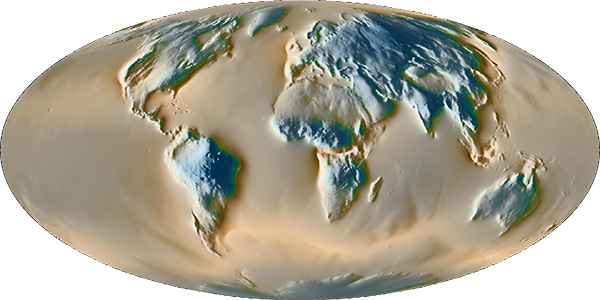

Atmospheric loading are computed using ECMWF (European Centre for Medium Range Weather Forecasts) operational (3-hourly), reanalysis (6-hourly ERA interim and hourly ERA5) and MERRA2 (The Modern-Era Retrospective analysis for Research and Applications, V2), assuming different ocean response, e.g. inverted barometer or a dynamic response using TUGO-m [Carrère & Lyard, 2003].
In each file, three different products/columns (unit: nm s-2) are provided:
The local contribution is exactly equal to:
The spatial and temporal resolutions of atmospheric ERA interim model are about 0.7° (reduced Gaussian grid) and 6 hours, only an IB ocean response is considered for this product.
The spatial and temporal resolutions of atmospheric ERA5 model are about 0.3° (reduced Gaussian grid) and 1 hour, only an IB ocean response is currently considered for this product.
The spatial and temporal resolutions of MERRA2 is 0.625° and 1 hour.
The spatial resolution of the ECMWF operational atmospheric model varies from about 0.35° in 2000 to 0.15° after 2010. No jump should appear when the resolution of the model is improved (2005/10 and 2009/10). The temporal resolution of the models are 3 hours. An improved version of TUGO-m is used, with spatial and temporal resolutions of 0.25° and 3 hours.
The use of the TUGO-m model has shown significant improvement in terms of reducing the amplitude of the gravity residuals compared to the classical inverted barometer assumption [Boy and Lyard, 2008; Boy et al., 2009]. It also allows a precise estimate of the ocean non-tidal loading contributions of major storm surges [Boy and Lyard, 2008; Boy et al., 2009].
Atmospheric loading computations are available here in 2 subdirectories corresponding to the size of the local disks :
The filename gives the station name, the starting year and last year. Access to the files.
Careful: As TUGO-m model is forced not only by atmospheric pressure but also by surface winds, loading estimates from classical ocean general circulation model (such as ECCO) should not be added to the (ECMWF+TUGO-m) loading computations.